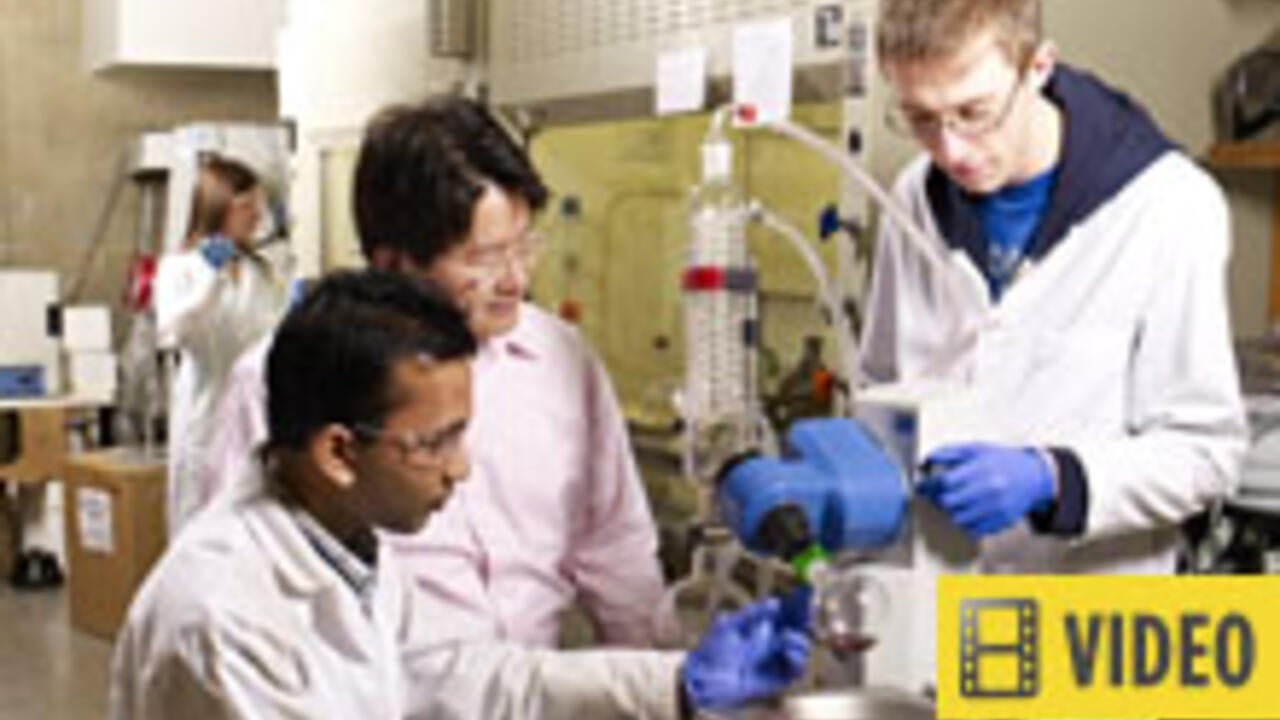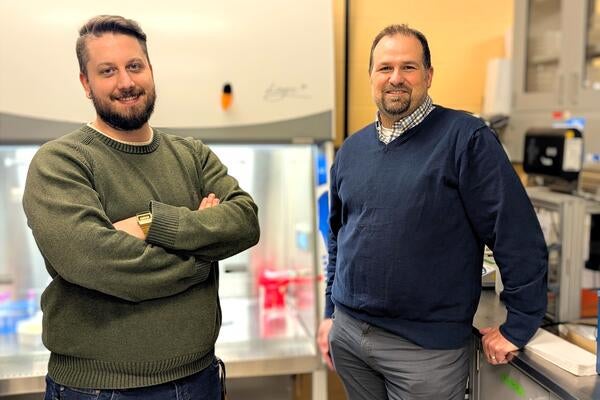
Stronger than chlorine: Tiny nanoparticles tackle big water problems
Nanoparticles invented at the University of Waterloo remove pollutants from water when light is shone on them

Nanoparticles invented at the University of Waterloo remove pollutants from water when light is shone on them
By Heather Bean Marketing and Strategic CommunicationsTiny nanoparticles developed by researchers at the University of Waterloo have successfully cleaned up water contaminated with some of the world’s nastiest pollutants.
The research team, led by Frank Gu, assistant professor in the Department of Chemical Engineering, has applied for a patent and is currently working on scaling the technology, which has a host of possible applications - from public water treatment to toxic spill remediation.
“It has the potential to prevent a great deal of damage to humans and their environment,” says researcher Tim Leshuk, a PhD student in chemical engineering and recent recipient of the prestigious Vanier Canada Graduate Scholarship.
As an undergraduate, Leshuk wanted to find ways to treat cancer but the technology he helped develop with Gu may actually prevent cancer and a host of other illnesses. “Water chlorination technology has saved more lives around the world than any other health innovation,” Leshuk says. “I find this pretty inspirational.”
Pesticides, pharmaceuticals, and industrial pollutants all accumulate in our water supply, and currently there’s no way to filter them out. The nanoparticles invented by the Waterloo research team, called photocatalysts, have cleared water samples of hormone disruptors and pharmaceuticals, and tests are being run on industrial wastewater.
Less than a gram of these nanoparticles can filter a litre of water and because they’re catalysts, they can be used again and again—indefinitely, in fact.
“They harvest sunlight and spew out a mixture of highly-reactive free radicals, which are much more powerful than chlorine and which can rip apart these persistent chemicals into nontoxic components,” Leshuk explains.
The problem, until now, has been removing the photocatalysts from the water after they’ve done their work; as Leshuk puts it: “That’s the definition of a pollutant.” To address this, he has given a magnetic core to each nanoparticle. When their work is done, the photocatalysts can be pulled from the water with a magnet.
Though the technology is advanced, the process is simple: “Put the nanoparticles in the polluted water, shine light on them to activate their purification, and then sweep the particles out with a magnet.”
The University of Waterloo has more than 125 faculty members engaged in water research. The University's Water Institute is hosting a water Research Symposium on May 1 followed by a distinguished lecture by Peter Gleick, president and co-founder of the Pacific Institute in California. Join the conversation on Twitter @water_institute

Read more
Here are the people and events behind some of this year’s most compelling Waterloo stories

Engineering master's student Nayeema Nonta (left), one of the three paper authors, and her supervisor, Dr. Sirisha Rambhatla, in a large server room with the computer power needed to develop their new LLM training technique. (University of Waterloo)
Read more
Waterloo researchers develop highly efficient AI training system that paves the way for cheaper, greener “intelligent partners”

Read more
Engineering researchers team up to tackle the plastics pollution problem with microbial innovation and engineering design
The University of Waterloo acknowledges that much of our work takes place on the traditional territory of the Neutral, Anishinaabeg, and Haudenosaunee peoples. Our main campus is situated on the Haldimand Tract, the land granted to the Six Nations that includes six miles on each side of the Grand River. Our active work toward reconciliation takes place across our campuses through research, learning, teaching, and community building, and is co-ordinated within the Office of Indigenous Relations.